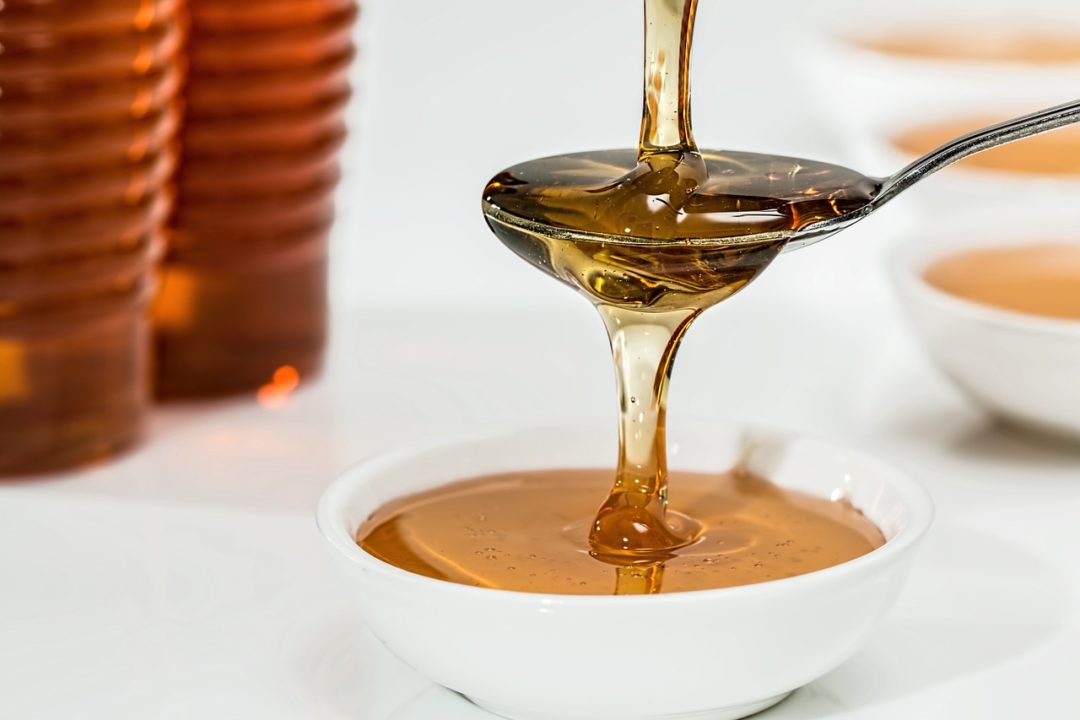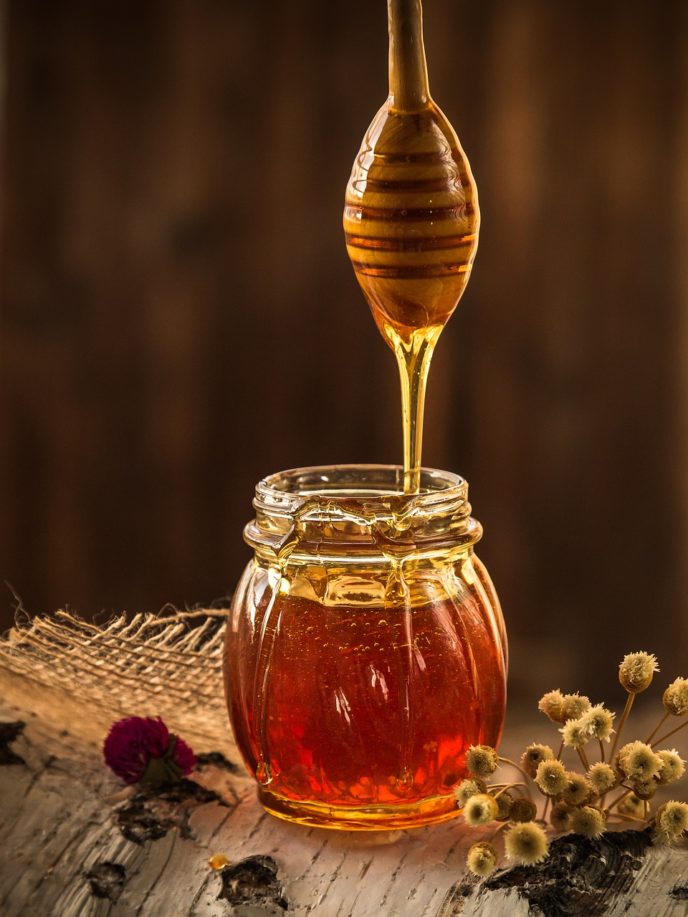It has been used as food and medicine since ancient times. Human use of honey has been traced for 8000 years. In addition to the important role of natural honey in traditional medicine, laboratory and clinical research by several research groups has been intensified during the last few decades. So honey is used more and more in modern medicine.
Honey has been reported to have an inhibitory effect on about 60 types of bacteria, some types of fungi and viruses. The antioxidant capacity of honey is important in many diseases and is due to a wide range of compounds, including phenolic acids, peptides, organic acids and enzymes. Honey is also used in some gastrointestinal, cardiovascular, inflammatory and neoplastic conditions.
Also read this: Honey diet, what it is and how honey diet helps in losing weight
Although honey contains a high percentage of sugar, it is still a better choice than refined sugar.
While refined sugar is simple in composition, honey contains antioxidants – including phenolic acids and flavonoids, enzymes, vitamins, minerals and trace elements.
 Sugar makes up 95–99% of the dry matter of honey. The main carbohydrates in honey are fructose (32.56 to 38.2%) and glucose (28.54 to 31.3%), which represent 85–95% of the total sugar that is easily absorbed in the gastrointestinal tract.
Sugar makes up 95–99% of the dry matter of honey. The main carbohydrates in honey are fructose (32.56 to 38.2%) and glucose (28.54 to 31.3%), which represent 85–95% of the total sugar that is easily absorbed in the gastrointestinal tract.
Also read this: Ten valid reasons why we should eat grapes
The most important acid in honey is gluconic acid, which is obtained from dextrose. Other acids isolated from honey are acetic acid, butyric acid, citric acid, malic acid, formic acid, succinic acid, lactic acid and pyroglutamic acid, and inorganic acids such as phosphoric and hydrochloric acids.
Also read this: The art of drinking water – It is best to drink bioactive water!
Excessive use of fructose increases liver fat, creates “bad” LDL, oxidizes lipoproteins, damages artery walls, induces hypertension, blocks insulin and thus chronically raises blood sugar. It is a comprehensive package for getting atherosclerosis and heart attacks.
 That’s why honey should be used in moderation, not after a meal, but as a snack or snack, and I recommend it with baked apples or pears and some walnuts. Then we create the conditions for maximum absorption of honey components. Honey can be used in sweets, juices, coffee, compote, tea in moderate quantities. Spirits and wines with honey are well known.
That’s why honey should be used in moderation, not after a meal, but as a snack or snack, and I recommend it with baked apples or pears and some walnuts. Then we create the conditions for maximum absorption of honey components. Honey can be used in sweets, juices, coffee, compote, tea in moderate quantities. Spirits and wines with honey are well known.
Also read this: Everything we need to know about nutrition during fasting
However, although honey may be a better option than refined sugar, it should still be consumed in moderation to prevent adverse effects on your health.
Also read this: Truths and misconceptions about the alkalinity, acidity and basicity of the body
Honey is sweeter than sugar, so you may want to use less honey than sugar in some recipes. But honey actually has slightly more carbs and more calories per teaspoon than sugar—so any calories and carbs you save will be minimal.
 Therefore, the disadvantage of honey is its strong energy capacity, so it should be used in moderate quantities. The most important thing is how honey is used. Certainly not after a meal, because it encourages fermentation in the stomach. Honey in sweets also interferes with quality absorption.
Therefore, the disadvantage of honey is its strong energy capacity, so it should be used in moderate quantities. The most important thing is how honey is used. Certainly not after a meal, because it encourages fermentation in the stomach. Honey in sweets also interferes with quality absorption.
Also read this: The face reveals the disease
Many people cannot use honey due to stomach weakness or reduced immunity. Honey with walnuts has advantages due to unsaturated fatty acids and lysine contained in walnuts. That is why tufahija (baked apple cake with honey and walnuts) is one of the most effective ways of using honey. But not immediately after a meal, but as a snack or half an hour before a meal.
Also read this: Food as an obsession – Eating disorders are complex mental illnesses
The next disadvantage of honey is the possible poisoning of bees by insecticides and other toxicants in nature. Air pollution also affects honey poisoning. Modern bee diseases caused both by environmental protection and by means of feeding bees also affect the quality of honey. Buy honey from a proven producer, because honey, like all types of goods, can have different quality.
 The quality of honey is a very important factor in its utility value. Unfortunately, like any commodity, you can find honey of good and poor quality on the market.
The quality of honey is a very important factor in its utility value. Unfortunately, like any commodity, you can find honey of good and poor quality on the market.
Also read this: How to prevent and treat obesity
Honey is also an energizer, helping workers and athletes to overcome fatigue and regain energy. Children, young and old can tolerate natural honey, without side effects. Honey is a multivitamin tonic, has antibacterial properties and has antioxidants. Nausea, cough, cold, etc., can be treated by taking honey with a spoonful of basil leaf juice.
Also read this: How to clean the digestive tract
Honey is antibacterial, antiviral and antifungal, and all these properties make it ideal for use in wound healing.
 One of the oldest known civilizations, the Sumerians, were well acquainted with beekeeping and the use of honey.
One of the oldest known civilizations, the Sumerians, were well acquainted with beekeeping and the use of honey.
Also read this: Detoxification the Balkan way
Almost all natural honey contains flavonoids (pinocembrin, apigenin, kaempferol, quercetin, pinobanksin, luteolin, galangin, hesperitin and isorhamnetin), phenolic acids (such as ellagic, caffeic, p-coumaric and ferulic acids), ascorbic acid, tocopherols, catalase (CAT), superoxide dismutase (SOD), reduced glutathione (GSH), Millard reaction products and peptides. Most of these compounds work together to provide a synergistic antioxidant effect.
Also read this: Vitamin D reduces the risk of all types of cancer
The sugar content of honey is also high enough to inhibit the growth of microbes, but the sugar content alone is not the only reason for the antibacterial properties of honey. Second, the pH of honey is between 3.2 and 4.5, and this acidity is low enough to inhibit the growth of most microorganisms. Hydrogen peroxide produced by glucose oxidase is the third and probably most important antibacterial component, although some authors believe that non-peroxide activity is more important.
- Pour a little honey into a spoon. Hold the spoon over the candle flame, gradually heating it until the honey boils. If it boils and does not change color or smell, then it is real. If it darkens or smells like sherbet, then it is fake.
Also read this: The more you eat these foods, the more you lose weight
- Rub some honey between your index finger and thumb. Natural honey is not sticky. If what you rub is sticky, it means there is sugar or other sweeteners in it.
Also read this: Insulin resistance – when the cells are hungry, and the waist is getting wider
- Put two spoons of honey in a deep coffee pot. Add six tablespoons of alcohol and gradually heat on an electric stove for ten minutes. It must not be heated over an open flame due to the possibility of the alcohol igniting. If a white precipitate appears at the bottom, the honey is adulterated.
Checking the composition is very complex (heavy metals, macromolecules such as allergens, insecticides and pesticides and other toxicants).
Source: www.sitoireseto.com


